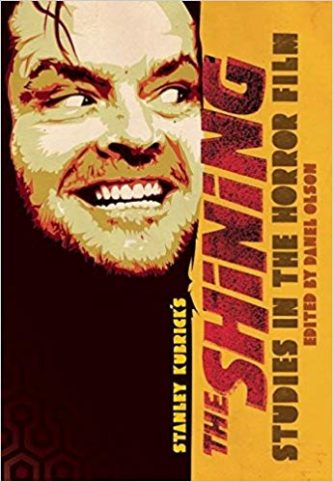 Edited By DANIEL OLSON (Centipede Press; 2015)
Edited By DANIEL OLSON (Centipede Press; 2015)
This exhaustive (and frankly exhausting) 750 page anthology can safely be termed the definitive resource on Stanley Kubrick’s version of THE SHINING by Stephen King. It contains all the information one could possibly desire, from sub-textual analyses to critical evaluations to extensive interviews with cast and crewmembers, many of which are published here for the first time. The net result is a gorgeously designed tome whose contents are drafted with a thoroughness and attention to detail worthy of the famously exacting Kubrick himself.
…a gorgeously designed tome whose contents are drafted with a thoroughness and attention to detail worthy of the famously exacting Kubrick himself.
It begins with a lengthy excerpt from John Baxter’s 1997 biography of Stanley Kubrick, which makes its subject out to be a nitpicking asshole (a point of contention I, and many other Kubrick fans, have with Baxter’s book overall). There follow 10 learned essays by various film scholars that explore topics ranging from the film’s divergences from Stephen King’s source novel, its poor critical reception, its alleged metaphorical portrayal of Native American subjugation, its historical overtones and its music score, complete with a detailed listing of the compositions played on the soundtrack and how they fit into the film.
Also included is a 2009 chat with Jack Nicholson, in which he claims he improvised much of the dialogue in the famous bathroom scene, but makes clear that the immortal “Heeeeeeere’s Johnny!” line was scripted. A more recent interview with Shelley Duvall finds her surprisingly upbeat about her experience making THE SHINING, even though she concedes it was incredibly difficult, and that she “cracked the shits” with Kubrick. The late Scatman Crothers, in a 1980 interview, is likewise quite upbeat about Kubrick and THE SHINING, although he does admit to being disappointed that his character gets killed off. Then there are Lisa and Louise Burns, who played the creepy twin girls, represented by a pair of interviews in which they recount their two scenes in the film in extremely minute detail, and also Lia Beldam, who played the ghostly woman in the bathtub. (Unfortunately Danny Lloyd, who so unforgettably portrayed young Danny, is conspicuously absent.)
Also included is a 2009 chat with Jack Nicholson, in which he claims he improvised much of the dialogue in the famous bathroom scene…
Among the remaining interviewees are co-screenwriter Diane Johnson, cinematographer John Alcott, steadicam operator Garret Brown, second unit director Greg MacGillivray, art director Les Tomkins, Kubrick’s longtime personal assistant Emilio D’Alessandro, artist Joan Honour Smith, who was responsible for compositing Jack Nicholson’s image into the vintage 1920s photo seen at the end of the film, and Stanley Kubrick himself, represented by a 1980 interview with the renowned French film scholar Michel Ciment.
The subjects of these latter interviews can essentially be broken up into two categories: those who liked Stanley Kubrick and those who found him a giant pain in the ass. That latter point is made by sound recordist Ivan Sharrock, who admittedly quit the shoot and swore off ever working for Kubrick again after being subjected to the latter’s grueling perfectionism. Ironically, this recollection follows a far rosier one by music supervisor Justin Bozung, who claims Kubrick “was loved by his crew and if you ever hear any different, disregard it.”
The subjects of these latter interviews can essentially be broken up into two categories: those who liked Stanley Kubrick and those who found him a giant pain in the ass.
Rounding out the book are extensive stills, behind the scenes photos, conceptual artwork inspired by the film and pen-and-ink caricatures of the cast and crewmembers by make-up artist Tom Smith.
I think it goes without saying that this volume is a treasure-trove for fans of THE SHINING, and Stanley Kubrick buffs in general. The one problem? It’s a Centipede Press publication, meaning its print run was quite limited, and the book is certain to go OOP fairly soon—translation: if you’re at all interested in this book you’d best snap up a copy ASAP!
